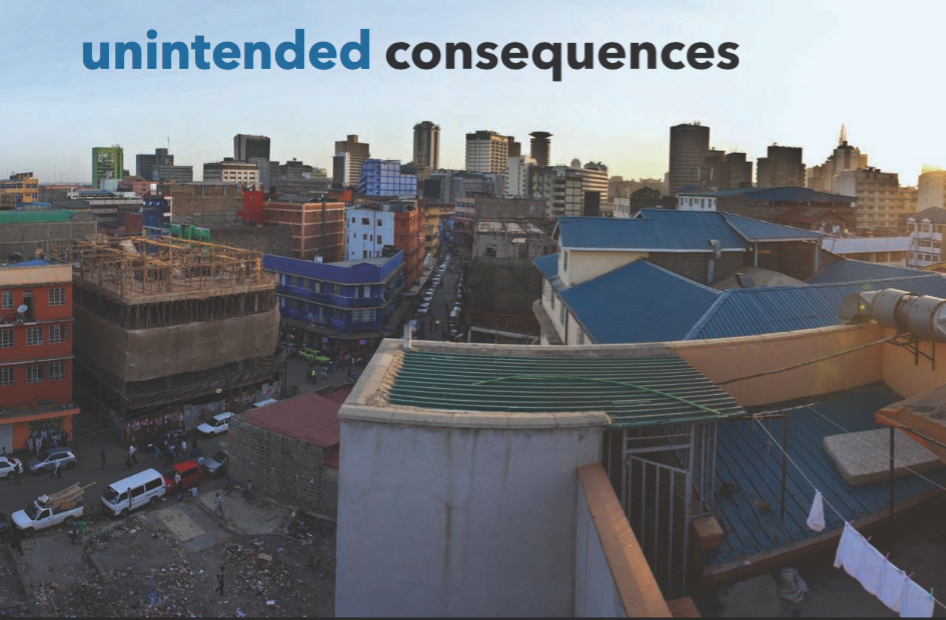ANZA 8 – UNINTENDED CONSEQUENCES
The eighth edition of ANZA magazine, the first East African magazine dedicated to architecture and urban planning, will be produced in collaboration with BauNetzWoche, a weekly publication based in Berlin, and with the Urban Narratives produced through this programme. As an open platform for exploring cities, “spaces and people”, ANZA is also looking for contributions to include in the magazine (to be published in the first quarter of 2017.
CALL FOR CONTRIBUTIONS
The built environment today is the most visible outcome of the solutions the needs of people living and using different spaces. However, even with the very significant presence of the built environment, we cannot deny the simultaneous rapid increase in somewhat more convenient use of space as determined by the users. This is the origin of Unintended Consequences (whether temporary or permanent), which tend to be combined with basically almost anything in our spaces: neighbourhood beauty, heritage, games, art, modernism, building and space usage… you name it. Nonetheless they are a critical aspect of architecture and planning. With ANZA magazine 8, we will be turning our focus on these Unintended Consequences. We will also elaborate more on what architecture without architects, truly means.
ANZA magazine invites you to write interesting and well-illustrated articles and contributions on the basic questions below. Together we would like to understand how people create and define their spaces. Contributors are required to exhaust all possible forms, methods and techniques to help one understand the topic. Feel free to also recommend existing projects and tell us why they are so unique.
Possible guiding questions may include:
What is the Unintended Consequence in your neighbourhood? How did it all start? What are the pros and cons to it?
How is the community affected and dealing with it? Who are the users? Who made/created the original intention or spatial design? Who transforms or reinvents it?
ANZA is looking for a wide range of contributions for their 8th issue. These could be texts, as well as images (photographs, sketches, artistic impressions, plans, instructions etc.). We are not looking for scientific papers but for articles that are readable by a large audience with demonstrate the highest standards in terms of contents, while remaining enjoyable to read.
Specifications and contact:
• the writing language is English
• 200-word abstract by 17th November, 2016
• full articles (1500 words max) will be required by 30th November, 2016
• please include photos and illustrations as attachments in TIFF format, min. resolution 300dpi
• figures should be numbered in the text
• please include image captions and credits (it is the responsibility of the author to ensure permissions for image use in both print and electronic publication and to pay for any licensing / reproduction fees)
Contributions should be sent to email to:
info(at)anzastart.com
anzastart(at)gmail.com

